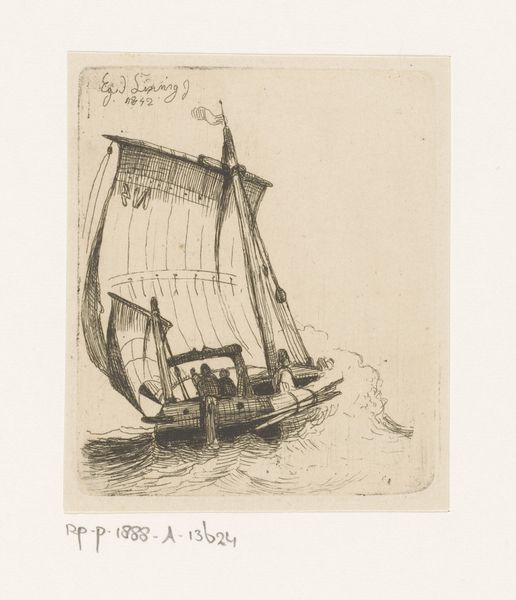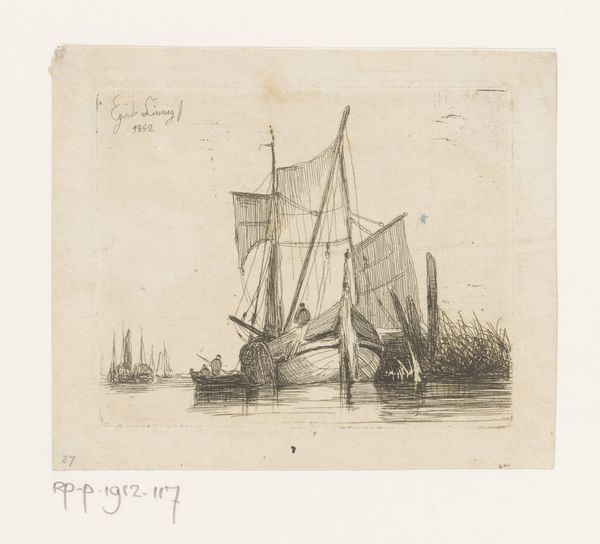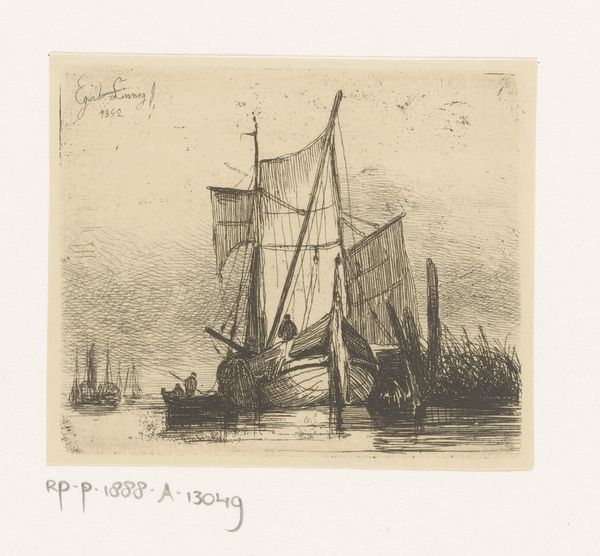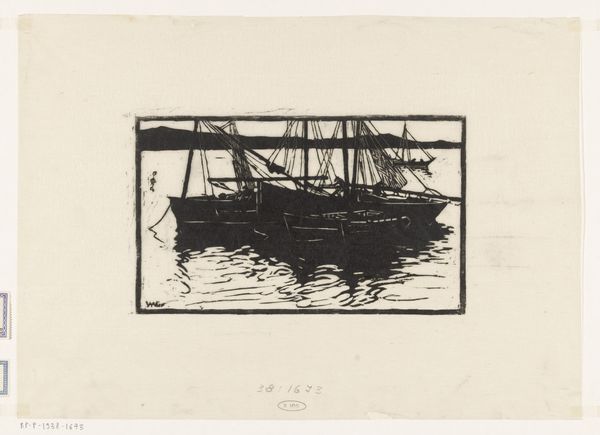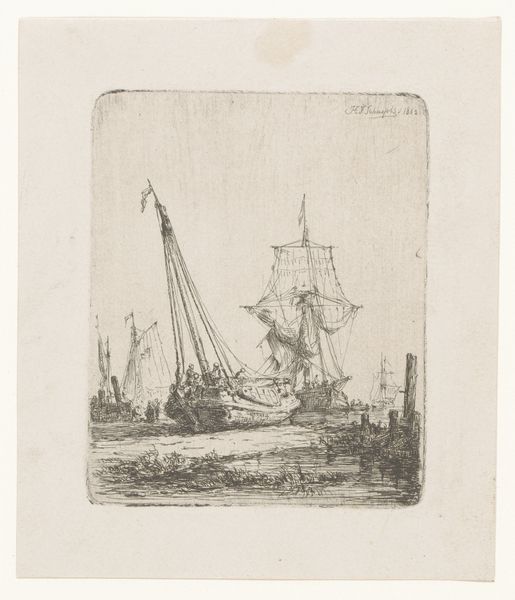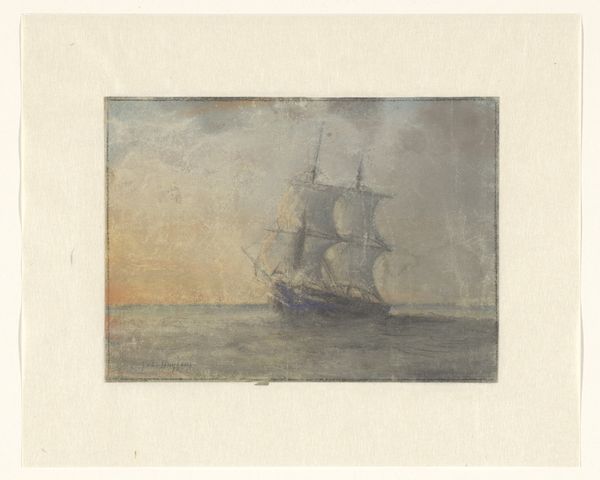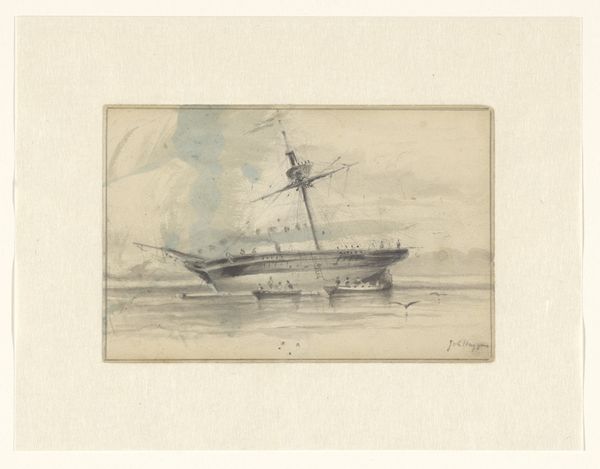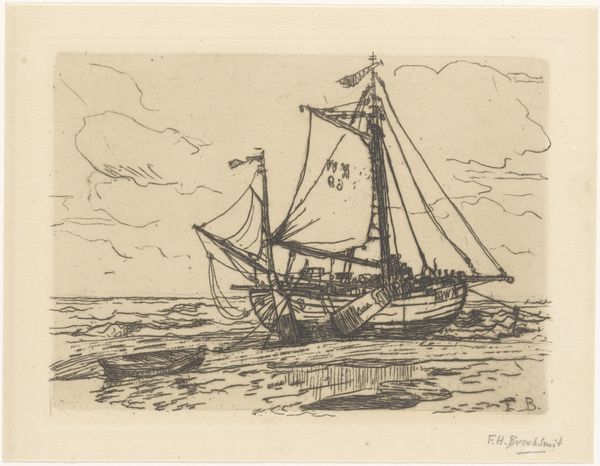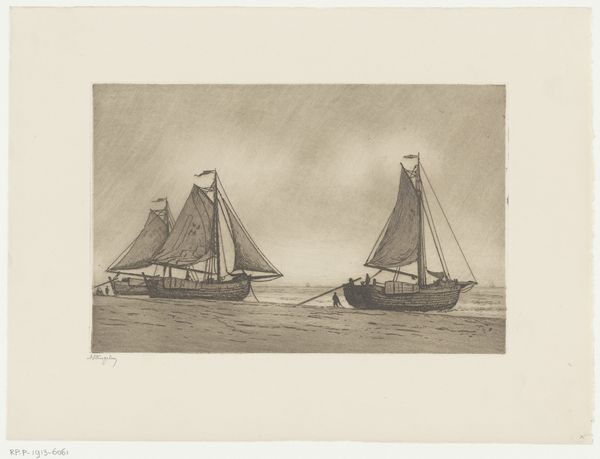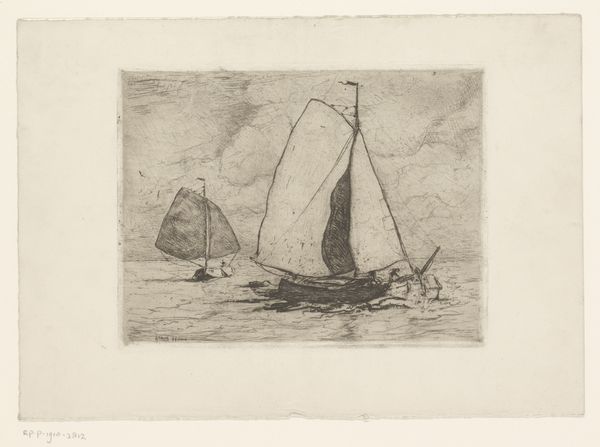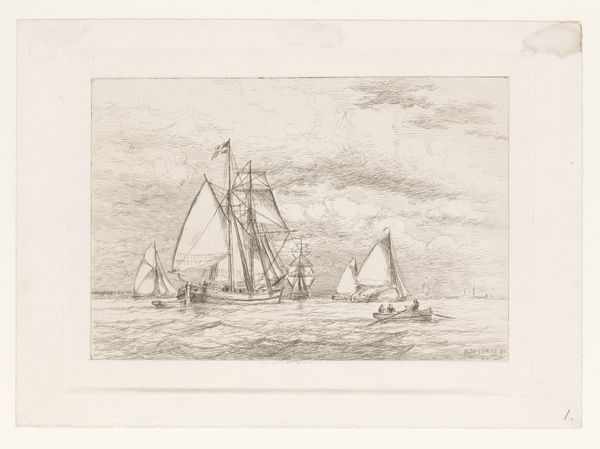
Dimensions: height 109 mm, width 132 mm
Copyright: Rijks Museum: Open Domain
Egidius Linnig made this etching, "Zeilschepen en een raderstoomschip op zee," using a metal plate, likely copper or zinc. The artist would have applied an acid-resistant ground, scratched an image into it with a needle, then submerged the plate in acid, which bites into the exposed metal, creating recessed lines that hold ink. The image itself shows ships at sea, rendered with countless tiny etched marks. Look closely at the choppy waves, or the rigging of the ships. This level of detail would have demanded countless hours of work at the bench, and a very high degree of skill. Consider how this labor-intensive process relates to the subject. These ships were themselves products of intense labor - built with axes, saws and hammers, sailed by crews facing constant peril. Linnig's print shares an affinity with their world. It reminds us that even in an age of mechanization, like the 19th century, the human hand was still essential. Ultimately, seeing this print through the lens of its making helps us to appreciate its historical depth.
Comments
No comments
Be the first to comment and join the conversation on the ultimate creative platform.

